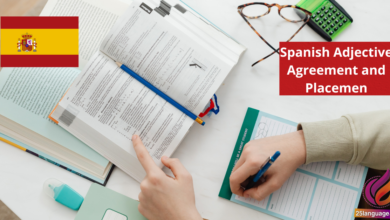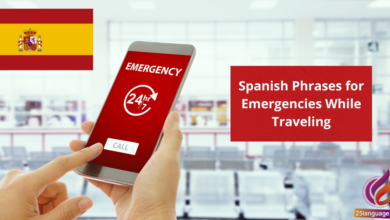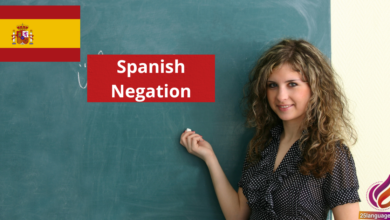The Present Tense in Spanish

Imagine being able to effortlessly describe your daily activities,express your thoughts,and share your experiences in Spanish. The present tense is your gateway to achieving this! In this lesson, we’ll explore how to conjugate regular and irregular verbs, allowing you to convey what you do right now. By mastering the present tense, you’ll enhance your conversations, making them more vibrant and engaging. Let’s dive into the exciting world of Spanish!
Mastering the Present Tense in Spanish: Understanding Forms and Functions
In Spanish, the present tense is used to express actions that are currently happening or that occur regularly. Understanding the forms of regular verbs is crucial in mastering this tense. There are three main categories of regular verbs: -ar, -er, and -ir verbs. Each category has its own set of endings that change according to the subject of the sentence. For example:
- -ar verbs: hablar (to speak)
- Yo hablo (I speak)
- Tú hablas (You speak)
- Él/Ella habla (He/She speaks)
- -er verbs: comer (to eat)
- Yo como (I eat)
- Tú comes (You eat)
- Él/Ella come (He/She eats)
- -ir verbs: vivir (to live)
- Yo vivo (I live)
- Tú vives (you live)
- Él/Ella vive (he/She lives)
In addition to regular verbs, it is also important to recognize the use of irregular verbs in the present tense, as they do not follow the standard conjugation patterns. Examples include:
- Ser (to be): soy, eres, es, somos, sois, son
- Ir (to go): voy, vas, va, vamos, vais, van
- Tener (to have): tengo, tienes, tiene, tenemos, tenéis, tienen
The following table summarizes some common regular and irregular verbs in the present tense, along with their English equivalents:
| Spanish Verb | Form | English Translation |
|---|---|---|
| hablar | hablo | I speak |
| comer | como | I eat |
| vivir | vivo | I live |
| ser | soy | I am |
| ir | voy | I go |
| tener | tengo | I have |
Practical Insights into the Use of the Present Tense in Everyday Spanish
The present tense in Spanish is used to express actions occurring right now, habitual activities, and global truths. To form the present tense, regular verbs are conjugated based on their endings. Here are the conjugation patterns for regular verbs:
- -ar verbs: hablar (to talk)
- yo hablo (I talk)
- tú hablas (you talk)
- él/ella/usted habla (he/she/you formal talk)
- -er verbs: comer (to eat)
- yo como (I eat)
- tú comes (you eat)
- él/ella/usted come (he/she/you formal eat)
- -ir verbs: vivir (to live)
- yo vivo (I live)
- tú vives (you live)
- él/ella/usted vive (he/she/you formal live)
| Spanish Example | English Translation |
|---|---|
| Yo leo un libro. | I read a book. |
| Nosotros vamos al parque los domingos. | We go to the park on Sundays. |
| Ellos siempre hablan español. | They always speak Spanish. |
| ¿Qué comes para el desayuno? | What do you eat for breakfast? |
Building Fluency: Examples and Exercises for the Present Tense
The present tense in Spanish is used to describe actions that are currently happening,habitual actions,or general truths. Regular verbs in Spanish are divided into three categories based on their endings: -ar,-er,and -ir. To conjugate regular verbs in the present tense, you need to remove the infinitive ending and add the appropriate present tense endings:
- -ar endings: -o, -as, -a, -amos, -áis, -an
- -er endings: -o, -es, -e, -emos, -éis, -en
- -ir endings: -o, -es, -e, -imos, -ís, -en
Such as:
| Spanish Verb | Conjugation | English Translation |
|---|---|---|
| hablar | yo hablo | I speak |
| comer | tú comes | you eat |
| vivir | ella vive | she lives |
Along with regular verbs, there are also important irregular verbs that must be memorized because they do not follow the standard conjugation patterns. There are a few common irregular verbs in the present tense,such as ser,ir,and tener. Here are some examples:
- ser: yo soy (I am), tú eres (you are), él es (he is)
- ir: yo voy (I go), tú vas (you go), ella va (she goes)
- tener: yo tengo (I have), tú tienes (you have), ellos tienen (they have)
Navigating Common Challenges in the Spanish Present Tense: Tips for Success
Understanding the present tense in Spanish is crucial for effective dialog. The present tense is primarily used to express actions that are currently happening or habitual actions. To form the present tense,regular verbs are conjugated based on their endings: -ar,-er,and -ir. For example, consider the verb hablar (to speak), wich is a regular -ar verb. The conjugation in the present tense would be as follows:
- Yo hablo (I speak)
- Tú hablas (You speak - informal)
- Él/Ella/Usted habla (He/She/you speak – formal)
- Nosotros/as hablamos (We speak)
- Vosotros/as habláis (You all speak - informal in Spain)
- Ellos/Ellas/Ustedes hablan (They/You all speak – formal)
In contrast, irregular verbs can pose a challenge, as their conjugations do not follow standard patterns.For instance, the verb ir (to go) is highly irregular in the present tense. Here’s how it’s conjugated:
- Yo voy (I go)
- Tú vas (You go – informal)
- Él/Ella/Usted va (He/She/You go – formal)
- Nosotros/as vamos (We go)
- Vosotros/as vais (You all go – informal in Spain)
- Ellos/Ellas/Ustedes van (They/you all go – formal)
| Spanish Verb | Conjugation in Present Tense | English translation |
|---|---|---|
| hablar | Yo hablo | I speak |
| ir | Yo voy | I go |
| comer | Yo como | I eat |
| tener | Yo tengo | I have |
Insights and Conclusions
¡Excelente trabajo hoy, estudiantes! Hemos llegado al final de nuestra lección sobre el presente en español, y estoy muy orgulloso de lo que hemos logrado juntos. Hoy, hemos explorado las formas regulares e irregulares de los verbos en presente, aprendimos a conjugar verbos en las tres conjugaciones: -ar, -er y -ir, y discutimos cómo el presente se usa para hablar de acciones habituales, verdades generales y situaciones actuales.Recuerden que dominar el presente es una base essential para comunicarse de manera efectiva en español. A medida que continúen su aprendizaje, les animo a practicar estas construcciones en conversaciones diarias, escribir oraciones, o incluso formar pequeños diálogos. Cada vez que usen el presente, estarán un paso más cerca de fluidez en el idioma.
No se olviden de revisar y practicar con los ejercicios que hemos visto hoy.La práctica constante es la clave para el éxito.¡Sigan adelante,y no duden en compartir sus progresos con sus compañeros y amigos! El español es una puerta a nuevas culturas y experiencias,y ustedes están en el camino correcto para abrirla. ¡Sigan aprendiendo y disfrutando del viaje! ¡Hasta la próxima!





























